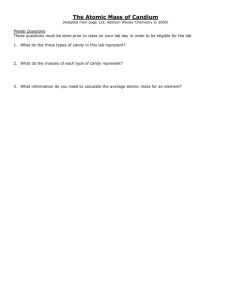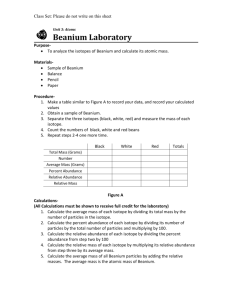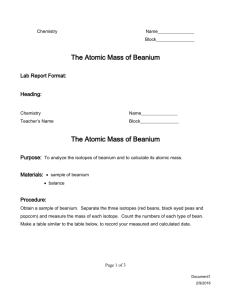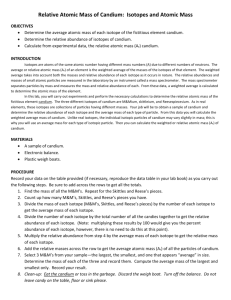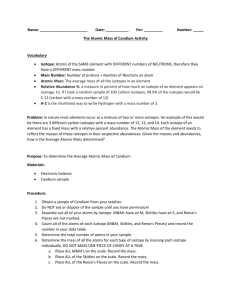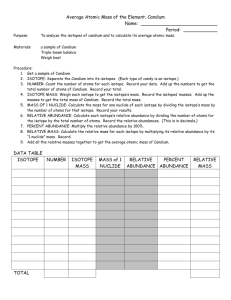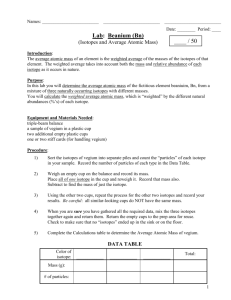Candium Lab Activity Objective: The objective of this lab is to
advertisement
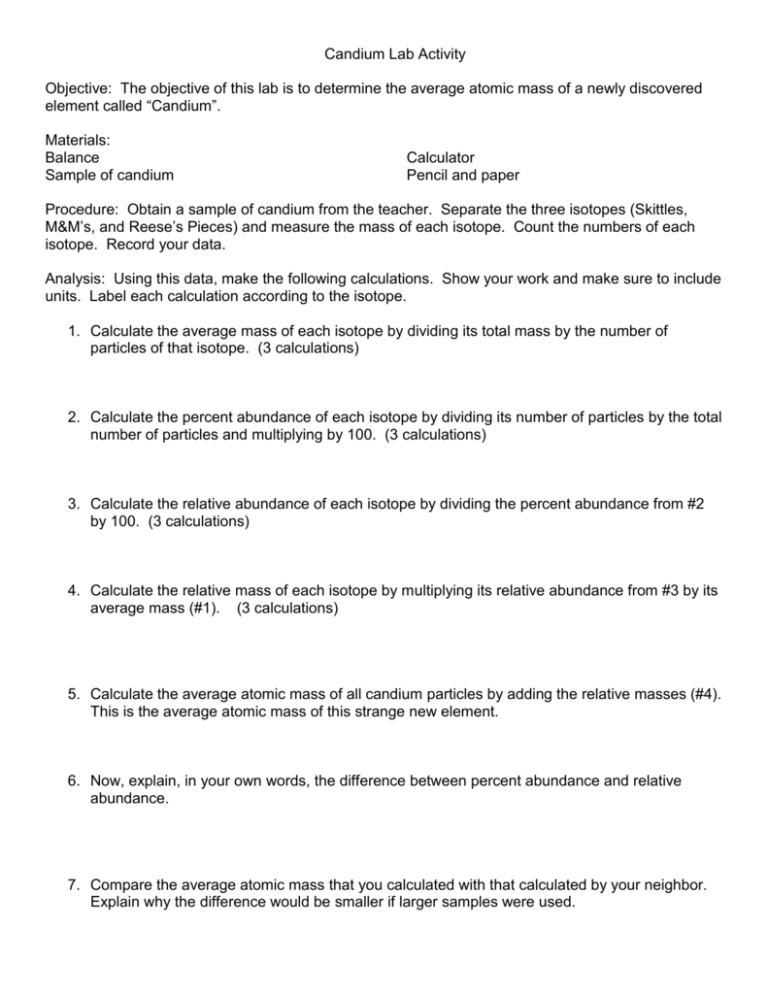
Candium Lab Activity Objective: The objective of this lab is to determine the average atomic mass of a newly discovered element called “Candium”. Materials: Balance Sample of candium Calculator Pencil and paper Procedure: Obtain a sample of candium from the teacher. Separate the three isotopes (Skittles, M&M’s, and Reese’s Pieces) and measure the mass of each isotope. Count the numbers of each isotope. Record your data. Analysis: Using this data, make the following calculations. Show your work and make sure to include units. Label each calculation according to the isotope. 1. Calculate the average mass of each isotope by dividing its total mass by the number of particles of that isotope. (3 calculations) 2. Calculate the percent abundance of each isotope by dividing its number of particles by the total number of particles and multiplying by 100. (3 calculations) 3. Calculate the relative abundance of each isotope by dividing the percent abundance from #2 by 100. (3 calculations) 4. Calculate the relative mass of each isotope by multiplying its relative abundance from #3 by its average mass (#1). (3 calculations) 5. Calculate the average atomic mass of all candium particles by adding the relative masses (#4). This is the average atomic mass of this strange new element. 6. Now, explain, in your own words, the difference between percent abundance and relative abundance. 7. Compare the average atomic mass that you calculated with that calculated by your neighbor. Explain why the difference would be smaller if larger samples were used.
